As wine regions across Europe grappled with a summer of severe drought and record-breaking temperatures, ultimately compromising the 2022 harvest with losses of up to 44%, the Toro DO brought in a record amount of grapes with quality to match quantity. Growers were cautiously optimistic earlier in the growing season but ultimately not surprised by the outstanding performance of their vines, defying the challenges of yet another year of climate change havoc. This year’s record harvest is testament to the resilience and value of two of Toro’s most valuable assets: its incredible stock of old vines, and the determination and expertise of its community of growers.
‘Being a grower in Toro requires a lot of discipline,’ commented a producer in late autumn, as the region acknowledged and analysed the meaning of this year’s success, following a harrowing summer working under a sun even more scorching than the scalding rule. Such discipline mirrors the sturdy adaptiveness of the vines they tend to, many of which have weathered multiple natural and socio-political challenges over a century of existence; from phylloxera, to the abandon forced by one civil and two world wars, by way of the pressures imposed by pull-off subsidised schemes. Toro is a land of commitment and determination, the intricate shape of old vines sculpted as much by time as by the hard work of those who remained true to their love for the land.
D.O. TORO
UK Tasting & Masterclass
Tuesday 7 March | 10:30am to 4:30pm
One Great George Street
scroll down for more details
A historical maverick
Although only now being discovered by many wine lovers around the world, the Toro wine region has a long if unusual history, in many ways fundamental to the establishment of Spanish wine as a household name. Winemaking in the area dates back to pre-Roman times, a key component of the life in Celtiberian settlements (to whom the Toro village owes its name – see below). It was in the Middle Ages, along with the consolidation of Christian occupation, that winemaking and viticulture became fully established, with underground cellars a feature of all local houses. Toro and its neighbouring villages are effectively built upon winemaking traditions, both symbolically and structurally.
The wines of Toro then had a key role, both cultural and economical, having been given royal privileges that allowed them to be sold where other wines could not be traded. Firmly established as a prized good, favoured by the cleric and noble classes, Toro wines were even among the supplies of Christopher Columbus’ discovery expedition, having been among the first to reach the American continent.
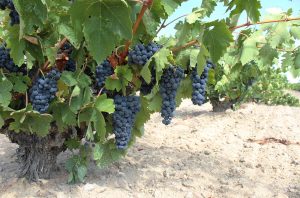
Fast forward to the 19th century when, after the first wave of devastation caused by phylloxera in France, Toro became, along with Rioja and Ribera del Duero, a key alternative source for the French market. This catalysed a significant development of the local wine industry and of the ecosystem of stakeholders. Trade attracted investment, allowing both existing and new businesses to flourish, and demanded technical expert support. This accounts for the creation of a local research centre and lab only comparable, in the early 20th century, to their Rioja counterparts. In 1932, a newly created legal framework for the wine sector included Toro as one of the foundational Spanish denominations.
The fate of Toro’s wine industry, as that of all the banks of the Duero, would take an unfortunate turn following the turbulent geopolitical events of the first half of the last century. Further to their impact on local demographics and economy, international trade also came to a grinding halt, both due to the world wars and to France’s recovery from phylloxera. These caused the demise of many of Spain’s denominations, Toro included. But the region preserved an invaluable asset, none of the others was privileged to have: Toro’s sandy soils, so poor in organic matter, allowed the area to remain almost phylloxera free, while the rest of Spain struggled to recover from the second wave that spread through Europe. Toro was therefore in a privileged position to emerge as a mature and established wine region, as soon as the economic and social context began to change.
Since the reestablishment to the DO Toro in 1987, the area has experienced an exciting and quick transformation, that confirms both its vocation as a land that produces great wine from unique vines and the resilience of its community of growers and winemakers. In a relatively short period of time, DO Toro has gone from a discreet alternative to other established wine regions, to producing some of Spain’s most sought after red
wines. Most importantly, the region has managed to consolidate its reputation for fine wine alongside a reassuring output of approachable, high quality everyday wines. Few regions around the world can claim to offer, across its range, a deep sense of place and parentage from an outstanding stock of old vines with invaluable genetic material.
Toro – Origins of a name
It might seem a fortunate marketing decision that an historical Spanish village, and its eponymous iconic denomination of origin, are named after an equally iconic Spanish symbol – the bull. The origins of the name are, however, as deep-rooted as the region’s winemaking tradition itself. The toro (‘bull’) the village’s name pays tribute to is a stone totem in the shape of the animal, which likely had symbolic and devotional significance to the Celtiberian settlers that occupied the region in the last centuries BCE. The bull is still displayed today outside the village’s Alcázar (fortress).
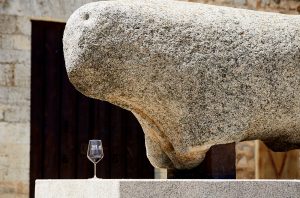
Tinta de Toro – power and elegance
Toro’s flagship grape has had to, not without difficulty, affirm itself within the context of an overpowering genetic truth: Tinta de Toro might be, genetically speaking, the same variety as Tempranillo, but its phenotypic expression has become distinct enough to warrant a name of its own. Forced to adapt to the hardship of the extreme continental climate and the challenging poverty of the soils, Tempranillo acquired, over time, a particular face and structure in the lands of Toro: smaller berries, looser bunches, lower yields of fruit with higher phenolic content. In the vineyard, this is reflected in less grapes of incredible concentration; in the glass, it is translated into a complex array of deep flavours that combine fruit richness with trademark savoury aromas of herbs, liquorice and sweet spice. A characterful grape that is the product of an equally expressive and singular landscape, the sinewy turns of the Duero mirrored by each gnarly vine, the rugged soils evoked by the robust elegance of the wines.
Tinta de Toro’s full potential is far from being fully tapped into – its rediscovery has happened in tandem with the region’s evolution as a whole. A new generation of winemakers is reinterpreting ancient knowledge and the experience of their grandfathers under the light of technical expertise and environmental awareness. Part of this process has been a novel appreciation for old vines and for the specific viticultural techniques they require.
Alternative fermentation and ageing vessels are also having an important role in expanding the structural understanding of Tinta de Toro. By removing the wood variable, winemakers are gaining a deeper, more comprehensive grasp on what is the essence of their queen grape. With all the nuanced complexity and concentration delivered by the best Tinta de Toro fruit, a lower intervention approach seems an obvious choice. Toro winemakers are well aware, and increasingly so, of their major task as one of facilitating the natural potential of the fruit that reaches their cellars. ‘The fruit arrives at the winery with an incredible potential and our job is not to decrease it,’ explains Alejandro Vicente, Head of Viticulture at Bodegas Numanthia.
Still, wood does play a role in bringing out some of Tinta de Toro’s full splendour and spectrum of flavours, often obscured in its early years and needing gentle tutoring to reveal itself through time. As such, wood can, and is being increasingly used as a facilitator rather than as a protagonist, allowing the best Tintas de Toro to embark on a long journey of successful ageing. Tasting through multiple vintages of Tinta de Toro wines two characters come to the forefront – enduring balance and structural poise – confirming this potential to not merely endure but indeed benefit from the test of time.
It’s interesting to see how producers are increasingly able to find their own expression of Tinta de Toro while not losing – and in fact underlining – varietal expression. What makes Tinta de Toro a special grape is also its capacity to reveal different facets, based on vintage, terroir and winemaking interpretation.
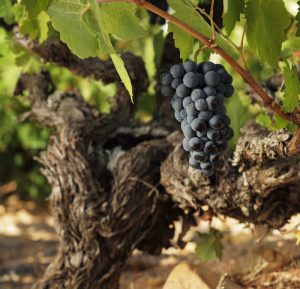
A tale with more chapters
The reality of DO Toro is not, however, a tale of one grape. All the more when the long viticultural history – shaped by many varieties and wines – is being further researched and appreciated. Further to renewed historical interest, the challenges of climate change have also forced growers, winemakers and researchers to explore a wider palette of varieties that might enable them to face the future with better tools and more confidence.
The role of Garnacha is increasingly valued, both as a balancing blending companion and in single-varietal wines. Winemakers are harvesting the variety early, while acidity is still high and the fruit profile is dominated by crunchy red fruit, to balance Tinta de Toro’s alcohol levels and fruit lusciousness. And also to produce deliciously crisp reds, vibrant and bright, perfect for summer drinking.
Harvest dates have indeed become an ever more important, and anxiety-inducing, decision, when the balance between phenolic and sugar ripeness is challenged by extreme weather events. Optimising acidity and freshness, without compromising complexity and maturity, has become the priority. “We like to harvest ‘al dente’,” sums up Gonzalo Iturriaga de Juan, Technical Manager at Tempos de Vega Sicilia.
Beyond Garnacha, there is potential for many other varieties, both red and white, with Malvasia, Verdejo and Albillo Real as the main protagonists. There is interest in experimenting with styles and categories, the increasingly diverse and dynamic community of winemakers eager to explore the wealth of the local terroirs beyond red wines. And although the region’s motto is ‘Un Tinto, un Toro’ (one red, one Toro), the same singular terroirs that yield the best Tinta de Toro grapes, can bear fruit for characterful rosés and whites as well. Some producers are also exploring the expressiveness of old field blends, important both as historical testament and as sources of data and plant material.
Toro’s natural affinity with sustainable viticulture makes this work of research and experimentation both easier and more worthwhile. The region’s growers have long had an unpretentious, no-nonsense relationship with their vines, based on minimal, thoughtful intervention and on an interpretation of each plant as a universe of its own. The very nature and structure of Toro’s many ungrafted, bush-trained vines has required this to be the case and the rule. Even so, modernity introduced many novel techniques which are now being re- appraised, and even discarded, in favour of a return of ancestral techniques much more in tune with nature, the vines and their specific demands. In the vineyard as in the cellar the future is being built upon a deeper connection with the past.
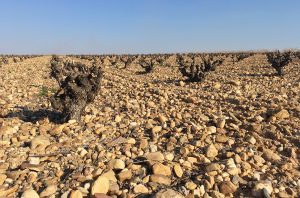
Looking ahead
This underlines one of the region’s key strengths moving forward: an inherent climate resilience, built upon the investment on a unique viticultural patrimony (plants that have grown and adapted to the hard demands of the land), on a community of growers that has evolved while remaining grounded in the reality of the landscape.
There’s an exciting sense of modernity – a striving for technical excellence, depth of knowledge and purity of expression – alongside a return to tradition in its best sense: a reconnection with the land, a listening to nature and its ever-changing demands. Toro is a land where vines and people have long fought the same battles together. The future challenges will be yet another chapter in this shared history to achieve a single, clear goal: to continue producing wines that balance power with finesse, intensity with nuance, generosity with assertiveness.
If the Toro village has, underneath its historical buildings and intricate streets, a viscera of old cellars, so are its people and soul viscerally linked to the vines that grow along Toro’s stretch of the Duero.
TORO DO – Essential facts to know
Located southeast of the province of Zamora and southwest of the province of Valladolid, at the western end of Castilla y León, along the banks of the river Duero
Altitude: 620 to 870 metres
Climate: Extreme continental with some Atlantic influence
Average annual rainfall: 350-400 mm
Average annual temperature: 12-13 °C (with a wide amplitude, typically from -11 to 37°C)
Total area under vine: 5.389 hectares – of which Tinta de Toro accounts for 91.7% (4942 ha)
Total production: 17.8M litres (2022 harvest)
Styles of wine produced: white, rosé, red (respectively 2.8, 1.6 and 95.6% of bottles sold in 2022)
D.O. TORO
UK Tasting & Masterclass
Tuesday 7 March | 10:30am to 4:30pm
One Great George Street
A chance to discover wines from 20 Toro producers.
Sarah Jane Evans MW will host a masterclass at 11am.
Register now (strictly trade & press only)
Flagship Toro wines and producers:
White

Numanthia, Termes Blanco, Joven 2020
92 points
N/A Moët Hennessy UK
Hailing from a field blend of Malvasia, Albillo Real, Verdejo, and other yet to be identified varieties, this wine has a lovely creamy texture and weighty presence on the mid-palate. Partially aged in barriques adding nutty nuances to the quince, ripe pear, preserved lemon flavours. Elegant lining of wildflowers and chamomile. Alc 12.5%

San Román, Malvasia, Joven 2021
92 points
£45 City Wine Collection
Very elegant expression of Malvasia, fermented and aged in French oak barrels with frequent batonnage. The lees work is apparent in the generous body and mid-palate width. Fleshy lemon, white grapefruit, blanched almonds, green apple and crunchy pear are supported by a vibrant acidity. Very balanced and bright. Organic certified. Alc 12.5%
Garnacha

San Román, Garnacha, Joven 2020
92 points
£55 City Wine Collection
Vibrant Garnacha, fermented in stainless steel and aged in French barrique. Expressive nose with transparent cranberry and red cherry aromas. Elegant, balanced and very approachable, with firm yet smooth tannins. The generous red fruit has a zesty refreshing twist of blood orange and a spicy lining of black and white pepper. Beautiful finish with lingering garrigue and a pleasant grip in the tip of the tongue. Alc 14%

Mazas, Garnacha Tinta, Joven 2020
91 points
£14.95 Ultracomida
Fragrant, elegant nose of violets, crushes roses and raspberry. The softness of the palate is offset by good drive, with fresh, salivating freshness driving flavours of crunchy plums, ripe strawberry, raspberry and cranberry. Alcohol very well integrated, as are the tannins which are round but present. Alc 14.5%
Tinta de Toro 2021

Vatan, Tritón, Roble 2021
93
£27 J & Q Boutique Wines
Intense nose of plum, blackberry and blueberry jam. Very balance with transparent, well-defined flavours. Tannins in great harmony with the fruit, acidity and wood (which is very subtly worked in). Flavours of plum, red cherry, cranberry, supported by the grippy yet elegant structure. A zesty pull on the finish allows the fruit to linger. Alc 15%

Estancia Piedra, Piedra Roble, Roble 2021
92
£6.50 Jascots Wine Imports
There’s a very particular mineral aspect to this wine, adding wet stone freshness to the black cherry, pomegranate and violet aromas. This expressive nose is followed by a palate with good drive and slatey tannins. Crunchy pomegranate and cranberry are topped by liquorice dust. Long peppery finish. Organic certified. Alc 14.5%

Liberalia, Liberalia Dos, Roble 2021
92
£9 Sabor Zamorano Ltd
Deft blend of Tinta de Toro with a touch of Garnacha, aged for three months in oak. Rich nose of coffee, cocoa nibs, plum, black cherry and pomegranate. There’s a lovely tension of tannins, good grip and refreshing acidity. Medium length with lingering, well- carved flavours of well-carved flavours of plum, cranberry and poached plum. Alc 14%

Viñeguareña, Munia, Roble 2021
91
£12 Lea & Sandeman
Levely depth to the expressive bouquet of plum, red apples and pomegranate. Poised palate, showing bright plum, sour cherry and pomegranate and driven by assertive yet refreshing tannins. Good energy and pull on the mid palate offset by a deep aspect of forest floor and wet wood. Long finish with lingering plum and spiced cherry. Alc 14.5%
Tinta de Toro 2020

San Román, Prima, Roble 2020
93
£19.50 City Wine Collection
14 months in oak lend this blend of Tinta de Toro and Garnacha a poised frame and complexity. Alluring nose of violet, blackberry and red apple, with a beautiful balsamic nuance. Elegant palate, showing freshness and well-crafted tannins very well crafted – firm, assertive but round. Spicy nuances of cardamom, nutmeg and pink pepper. Alc 14.5%
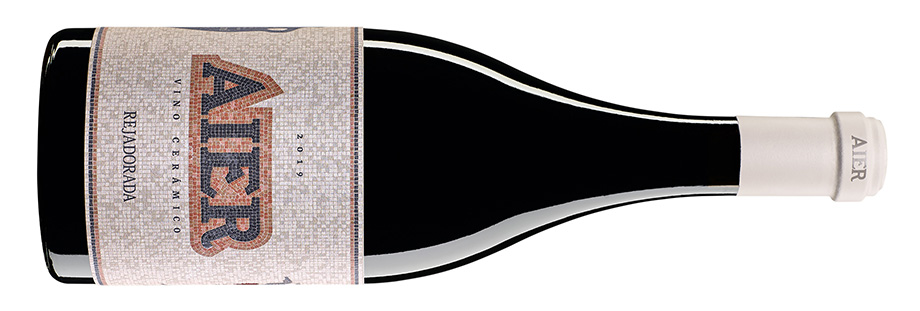
Rejadorada, Aier, Roble 2020
93
£28.99 House of Townsend
Low intervention take on Tinta de Toro, fermented and aged for 13 months in ceramic amphorae and bottled unfined, unclarified and unfiltered. Concentrated nose of plum, black cherry, blueberry and crushed mint. Beautiful palate, with superb textural appeal, and poised tannins. Breadth on the mid palate. Crunchy flavours of red apple, plum and cranberry driven by vibrant acidity. Alc 14.5%

Rodrigues Sanzo, La Viña de Amaya, Roble 2020
91
£20 Oackley Agency
The dark, earthy, broody nose finds balance in an assertive and refreshing palate, with plenty of nuance. A small percentage of Garnacha was added to Tinta de Toro, giving it a red fruit lift, softened by one year in barriques. Opens gradually in the glass, revealing layers of cranberry, cherry, plum and forest floor. Alc 14.5%
Tinta de Toro 2019

Vatan, Vatan, Roble 2019
92
£49 J & Q Boutique Wines
Fragrant nose with red fruit freshness, floral hints and a spicy seam. Fresh palate, with good balance and drive. Well defined flavours of crunchy plum, red cherry and pomegranate, topped by white and black pepper. Fine grained tannins, very well presented, and giving a poised frame to the fruit. Alc 15%

Monte La Reina, Castillo Monte La Reina, Crianza 2019
91
£13.50 Experience Wine
Intriguing nose of poached plums, Earl Grey, dried figs and prunes. Firm backbone giving drive and structural poise. Tannins provide a good framework to the fleshy fruit. Oak is well integrated adding notes of dry cedar and black pepper. Nice drive on the attack, rich fruit on the mid palate and long finish with lingering spice. Alc 14.5%

Viñeguareña, Munia Especial, Roble 2019
91
£21 Solaris Wines UK
Concentrated and fleshy, this wine hails from pre-phylloxeric Tinta de Toro vines and spends 24 months in French oak barrels. All these factors account for the untense poached plum, Earl Grey, black cherry and blackberry compote aromas. Followed on the palate by touches of dried thyme, cinnamon and cardamom, with a floral floral lining of violets and crushed roses. Alc 15%
Tinta de Toro 2018

Tempos de Vega Sicilia, Pintia, Roble 2018
94
£64 Berry Bros. & Rudd
Such well defined fruit, with a round and transparent quality to it. Pomegranate, cranberry, strawberry jam come through followed by red apple and pink grapefruit, topped by a subtle spicy layer. Juicy on the mid palate. Elegantly feminine with superb integration of alcohol and wood. Long finish with with persistent flavours of pomegranate and cranberry. Alc 14.5%

Iturria, Valdosan, Roble 2018
93
£23 The Wine Beagle
A very approachable wine, yet with a long life ahead, showing both layered complexity and juicy drinkability. Well honed tannins, fine and fresh, carry flavours of black cherry, cranberry, pomegranate and blackcurrant. Good energy and expressiveness to the finish, with a lively acid lift. Organic certified. Alc 14.5%

Mazas, Mazas Roble, Roble 2018
93
£12.95 Ultracomida
Deep, enveloping nose of plum, black cherry and red apples. The palate echoes the aromas, lifted by focused tannins and a spicy layer of black and white pepper and cardamom. Subtle liquorice undertones. Very fresh on the mid palate, with deft alcohol integration. Still so vibrant, with good ageing potential. Alc 14.5%

Iturria, Tinto Iturria, Roble 2018
92
£15 Naked Wines
Smart blend of 90% Tinta de Toro and 10% Garnacha. Wood is well worked with the tannins starting to round, wrapping flavours of plum, black cherry. blackberry and blueberry. A very intriguing wine, with an angular structure, firm but also generous, and layered complexity. Long finish with lingering plum and red apple. Good ageing potential. Alc 14.5%

Fariña, Campos Gothorum, Crianza 2018
92
£45.50 C & D Wines
Bottled unfined and unfiltered, this wine has a pleasant rustic quality to it, with a mouthfilling texture. The tannins are gravely mut very measured, offset by deep juicy fruit. Generous blackberry, mulberry and black cherry are spiced by black and pink pepper, bringing the palate to live. Alc 14.5%

Tardencuba, Monte Toro, Crianza 2018
92
£12.99 Liquid Indulgence Limited
Lifted, bright aromas of red plum, cranberry, strawberry and pomegranate. Wood is subtle and well worked, not overpowering the juicy fruit which comes through particularly on the mid-palate. A liquorice lining adds a sweet, intriguing touch. Good presence with balancing tensions of freshness, spiciness and depth. Long finish with a strong liquorice character. Alc 15%

Tardencuba, Tardencuba Autor, Roble 2018
92
£19.20 Liquid Indulgence Limited
Alluring nose of red fleshy plum, alcohol- infused cherries, raspberry compote, cranberry and red apple. The palate is focused and driven with alcohol so well integrated. Seductive seam of liquorice, quintessentially Tinta de Toro. Spicy finish with touches of black and white pepper, annissed and cardamom. Alc 15%

Gil Luna, Lunas Nuevas, Roble 2018
91
£27.95 Prebinvest Ltd. Excellar
Classical, enveloping nose of deep black fruit with floral and herbal aspects (oregano, forest floor, petrichor, violets). interesting earthy allure. Intense palate, quite elegant in its robust fleshiness. Tannins firm, present, with affirmative grip on the mid palate and finish. Organic certified. Alc 14.5%

Estancia Piedra, Lagarona, Roble 2018
90
£60 Jascots Wine Imports
Juicy depth to the palate, the black fruit of Tempranillo wrapped by the bright red Garnacha nuances. Soft tannins, quite fresh and affirmative on the mid palate, with nice red plum and rose touches. Good length with lingering cranberry, strawberry, liquorice and white pepper. Organic certified. Alc 15%
Tinta de Toro 2017

Numanthia, Numanthia, Roble 2017
94
£40-46 Moët Hennessy UK
Expressive, seductive nose, with developing aromas of liquorice, poached plum, violets and petrichor. The palate echoes the aromas with a refreshing twist of blood orange zest, vibrant acidity and focused tannins. Generous flavours of red cherry and plums. Velvety warmth on the mid palate followed by a longe spicy finish. Quite angular, with a certain vertical poise. Alc 14.5%

Elías Mora, Descarte, Roble 2017
93
£21.60 Georges Barbier of London Ltd
Earthy, fresh aromas of petrichor, forest floor, wild oregano, plums and dried nuts. Fantastic concentration on the palate with that same earthiness at the core, framed by firm, round tannins. Good acid drive throughout. Long finish with a spicy twist of liquorice and aniseed. Alc 14.5%

Quinta Quietud, Quinta Quietud, Reserva 2017
93
£29.99 Thorne Wines
This wine is the brainchild of a Bordeaux winemaker and the French, poised style is perceptible. Very intriguing and elegant, with intense black fruit wrapped by savoury layer of dried herbs and salty liquorice. Focused and pure, with a beautiful tannic frame and refreshing acidity. Organic certified. Alc 14.5%
Tinta de Toro 2016

Monte La Reina, Vendimia Seleccionada, Reserva 2016
93
£36.30 Experience Wine
The complex, expressive bouquet combines black fruit with a sweet aspect of liquorice, toffee and caramel. Alcohol and wood very well work into the bright red cherry, plum and wild strawberry flavours. Wood and tannins provide a good structural framework without ever coming to the forefront. Still so fresh and vibrant with a long life ahead. Alc 14.5%

Fariña, Gran Colegiata 80 Aniv., Reserva 2016
91
£24.99 C & D Wines
Seductively broody nose, of robust elegance, with aromas of crushed violets, roses, raspberry, ripe strawberries. A touch of pepper and vanilla adds intrigue and depth. The palate is dense with gravely tannins, very well integrated. Intense, velvety flavours of cherry, poached plum and strawberry jam are given a smokey edge of burnt sugar and charred wood. Alc 14.5%
Tinta de Toro 2015

Elías Mora, Gran Elías Mora – La Senda de los Lobos, Reserva 2015
93
£32.40 Georges Barbier of London Ltd
This single-vineyard Tinta de Toro is a benchmark example of the variety’s ageing potential and capacity to preserve freshness and juicy fruit while developing intriguing earthy nuances. Classical yet modern, with ripe black fruit supported by an underlying freshness, prickly liquorice and spicy black pepper. Beautiful herbal lining of wild oregano and balsamico. Alc 15%







